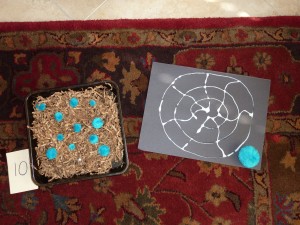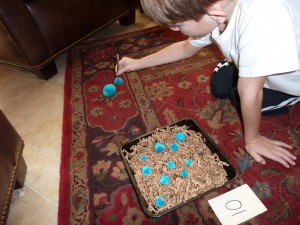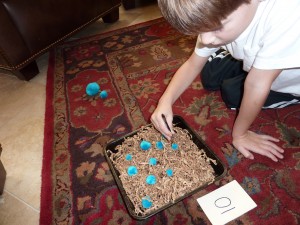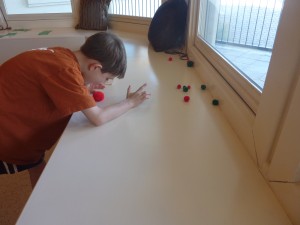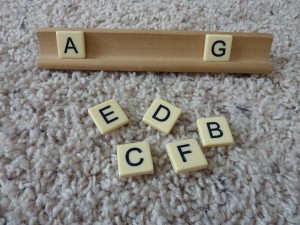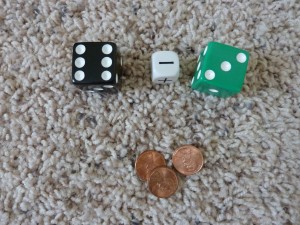My Obstacle Kit Item #6: Food Coloring
When thinking about how to make activities fun in order to make building more challenging skills exciting, I thought back to teaching my “Colors” unit in kindergarten. The students loved experimenting and learning how different colors are made. I started using food coloring in My Obstacle Course station activities with Andrew and got to see the same look of wonder and joy as he saw firsthand what happens when two colors blend together. So easy and so fun!!

Uses:
- drops of color into water combined with droppers, bulb syringe or turkey baster to build fine motor skills while experimenting with color
- drops of color into shaving cream or frosting to build hand and arm muscles by mixing with spoon
Sample Activities:
These are all pretty straight forward station activities. Click here for a food coloring post search from my website but these photos give a good idea of how we have used food coloring to add some color to station activities aimed at building hand muscles and muscle control.
My Obstacle Course Station Activity: Adding food coloring to make orange shaving cream for autumn themed shaving cream writing station

My Obstacle Course Station Activity: Color fun with droppers

My Obstacle Course Station Activity: Use hands to squeeze bag so frosting mixes and makes it colored

My Obstacle Course Station Activity: Use spoon to mix and make the frosting turn green

My Obstacle Course Station Activity: Pour colored water to fill muffin pan

These are just some ways we have used food coloring in My Obstacle Courses to make them a bit more fun. Such an easy add in that helps to motivate and inspire experimentation. Have fun!!
Engage, Encourage and Empower!

